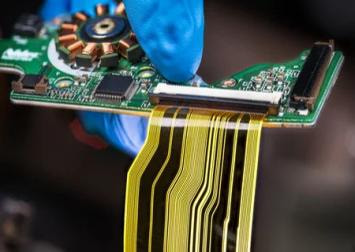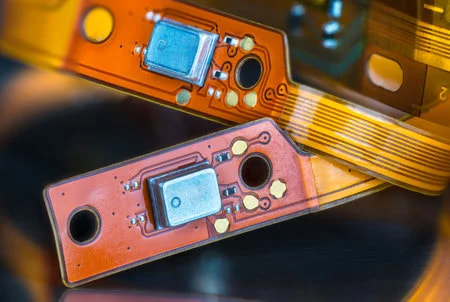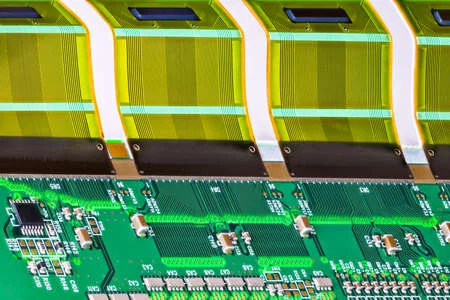Flex PCBs, also known as flexible printed circuit boards, are becoming increasingly popular in electronic designs due to their ability to offer greater flexibility and versatility than traditional rigid PCBs. With a wide range of applications, from aerospace and medical devices to consumer electronics and wearables, flex PCBs are a key component in modern electronics.
However, designing a flex PCB can be challenging, especially for those who are new to the field. In this article, we will discuss the 7 must-knows for your first flex PCB design, including flex PCB design guidelines, flexible PCB material selection, and flexible circuit board manufacturers.

- Understand the benefits of flex PCB design
Before diving into the details of flex PCB design, it's important to understand the benefits of using a flex PCB. Some of the key advantages include:
- Increased flexibility and bendability, allowing for more versatile form factors
- Reduced weight and thickness compared to traditional rigid PCBs
- Increased reliability due to fewer interconnects and solder joints
- Improved signal integrity and EMI/RFI shielding
By designing with a flex PCB, you can achieve more innovative designs with greater functionality and reliability.

- Follow flex PCB design guidelines
To ensure a successful flex PCB design, it's important to follow the design guidelines recommended by industry standards. Some of the key guidelines include:
- Use a flexible PCB material with a minimum bending radius of 10 times the thickness of the copper layer
- Avoid sharp angles or corners in the design, as they can cause stress on the flex PCB and lead to failure
- Ensure proper spacing between traces to prevent short circuits or signal interference
- Use a stiffener or support structure to provide additional support for areas of the flex PCB that are subject to stress
By following these guidelines, you can avoid common design mistakes and create a more reliable flex PCB.
- Select the right flexible PCB material
Choosing the right material for your flex PCB is crucial to its performance and reliability. There are several factors to consider when selecting a flexible PCB material, including:
- Bending radius: The minimum bending radius required for your application
- Temperature range: The operating temperature range of the material
- Dielectric constant: The ability of the material to store electrical energy
- Chemical resistance: The material's resistance to chemicals and solvents
- Moisture resistance: The material's ability to resist moisture absorption
Some of the most commonly used flexible PCB materials include polyimide, polyester, and PTFE. Each material has its own unique properties and is suitable for different applications.
- Consider the manufacturing process
The manufacturing process for flex PCBs is different from that of traditional rigid PCBs. When designing a flex PCB, it's important to consider the following manufacturing processes:
- Photolithography: Used to create the circuit pattern on the flexible substrate
- Etching: Used to remove unwanted copper from the substrate
- Lamination: Used to bond multiple layers of the flexible substrate together
- Assembly: Used to attach components to the flex PCB
It's important to work closely with your flexible circuit board manufacturer to ensure that your design is manufacturable and meets all necessary specifications.
- Use proper trace routing techniques
Trace routing is an important aspect of flex PCB design. When routing traces on a flex PCB, it's important to follow these guidelines:
- Route traces in a straight line as much as possible
- Use rounded corners instead of sharp angles
- Avoid crossing traces whenever possible
- Ensure proper spacing between traces to prevent short circuits or signal interference
By using proper trace routing techniques, you can ensure that your flex PCB performs reliably and with good signal integrity.
- Consider the application requirements
When designing a flex PCB, it's important to consider the specific application requirements. This includes factors such as the operating environment, temperature range, mechanical stress, and desired form factor. For example, a flex PCB used in a medical device may have different requirements than one used in a consumer electronic device.
It's also important to consider the required components and their placement on the flex PCB. The components should be placed in a way that minimizes stress on the flex PCB and allows for efficient assembly and repair.
- Work with experienced flexible circuit board manufacturers
Working with an experienced and reputable flexible circuit board manufacturer is crucial to the success of your flex PCB design. The manufacturer can provide valuable insights and recommendations on the best materials, manufacturing processes, and design considerations for your specific application.
When selecting a flexible circuit board manufacturer, consider factors such as their experience, certifications, quality control processes, and customer support. It's also important to communicate clearly with the manufacturer and provide detailed specifications and requirements for your design.
As a leading manufacturer of flex circuits, Best Technology has worked for this field for more than 16years, we provide one-stop service range from raw material sourcing, circuit board generating, component purchasing and assembly service, we beloeve we can be your one of most reliable supplier in Asia.
In conclusion, designing a flex PCB requires careful consideration of several key factors, including design guidelines, material selection, manufacturing processes, trace routing techniques, application requirements, and working with experienced manufacturers. By following these 7 must-knows for your first flex PCB design, you can create a reliable and high-performance flex PCB that meets the unique requirements of your application.



